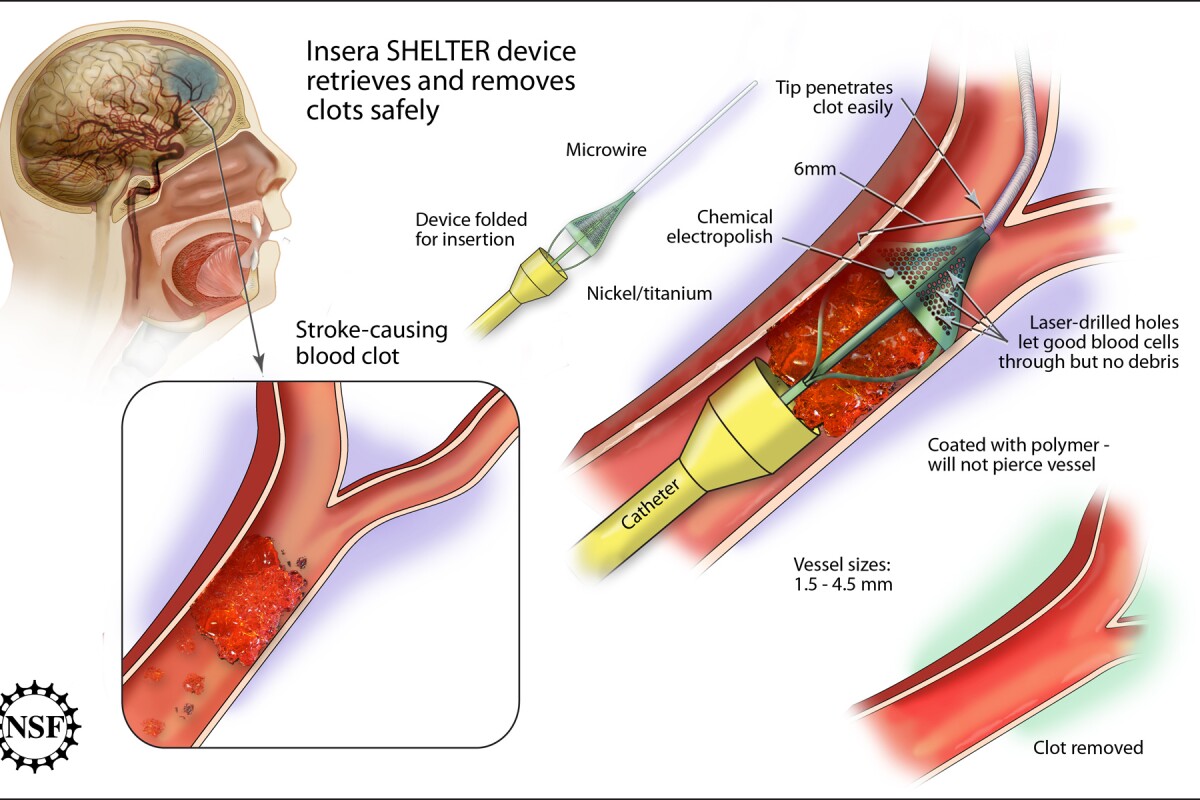By the time you finish reading this, two people in the U.S. will have suffered a stroke, or brain attack. Strokes are the third leading cause of death in the United States and claimed over 130,000 lives last year. Of those who survive, hundreds are left debilitated every day. Ischemic strokes, a blood clot or break in blood vessels in the brain, are responsible for 80% of all strokes. Fast treatment is critical; more than a million brain cells die each minute after onset of a symptoms, and the risk of brain damage increases rapidly if the clot is not removed within three hours. A new device, SHELTER, offers hope of extending the time a patient can get help. It filters and removes clots and can be custom-fit for the specific length and diameter of a patient's clot.
Developed by two brothers in California; Vallabh Janardhan, an interventional neurologist, and Vikram Janardhan, an engineer and CEO of their company Insera, SHELTER contains two primary components: an outer sheath for containing captured clots and an inner filament that houses a collapsible, five-millimeter-diameter, nickel-titanium mesh net that grabs and filters the clots. The inner component also contains a soft, spring-like tip and a polymer safety coating to prevent accidental puncturing of blood vessels, a risk with current clot removal devices.
The SHELTER catheter would travel through the blockage to the far side of the clot where the net would be opened like an umbrella. An interventional neurologist would then carefully pull the debris into a cylindrical trap that caps the outer length of the catheter, effectively encasing the stroke at both ends.
While we've recently seen similar advancements in clot removal SHELTER is said to be the first tool engineered to filter and remove clots from both its near and far ends. It will also be able to reach the small blood vessels of the brain. One issue with current devices is the difficulty in removing entire clots, which risks releasing clot debris that penetrates further into the brain and cause secondary strokes.
SHELTER may provide critical extra time to get patients to certified stroke centers. The current treatment for ischemic strokes is a clot-dissolving drug that must be administered less than three hours after onset of stroke symptoms; after three hours, the drug can cause systemic bleeding complications. As a result, even after 14 years of use, only three to four percent of all stroke patients benefit.
The Janardhans believe SHELTER could extend the treatment window to six, eight and possibly even 12 hours after onset of stroke symptoms.
The technology has been subjected to rigorous testing in a water-filled test bed. A silicone model of brain vasculature was created from a human cadaver. Insera then added "severe disease burden" to accurately represent the arteries of a real stroke victim, creating an environment far more realistic than a standard model or laboratory animal.
"If widely adopted, the approach could significantly cut animal testing for some medical devices and reduce overall product development costs by as much as ten percent," said Vikram Janardhan. "The silicone replica of the human brain can also be used as a humane alternative to train hundreds of physicians in the use of SHELTER."
The developers hope to run clinical trials of SHELTER in the U.S. in 2012 or 2013 and seek regulatory approval shortly thereafter.







